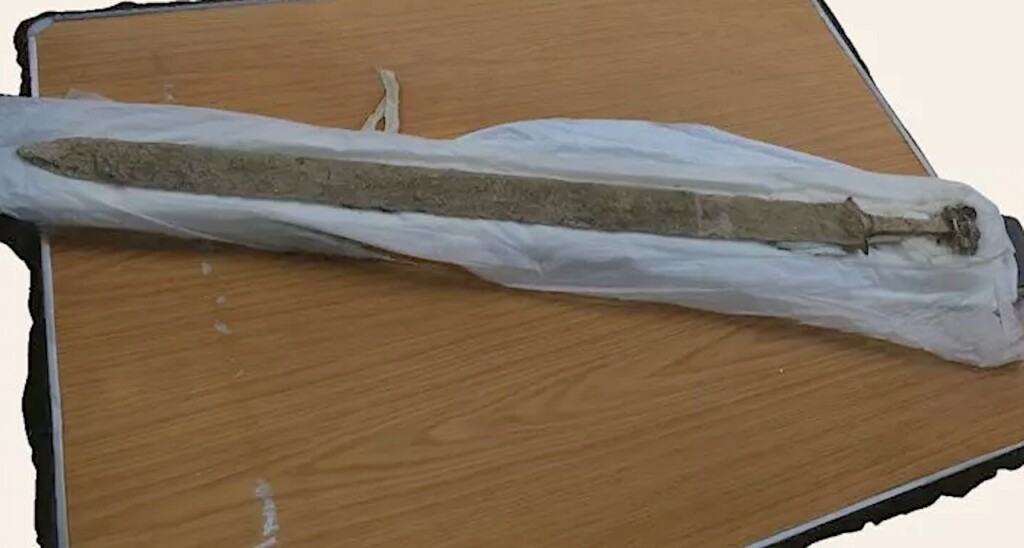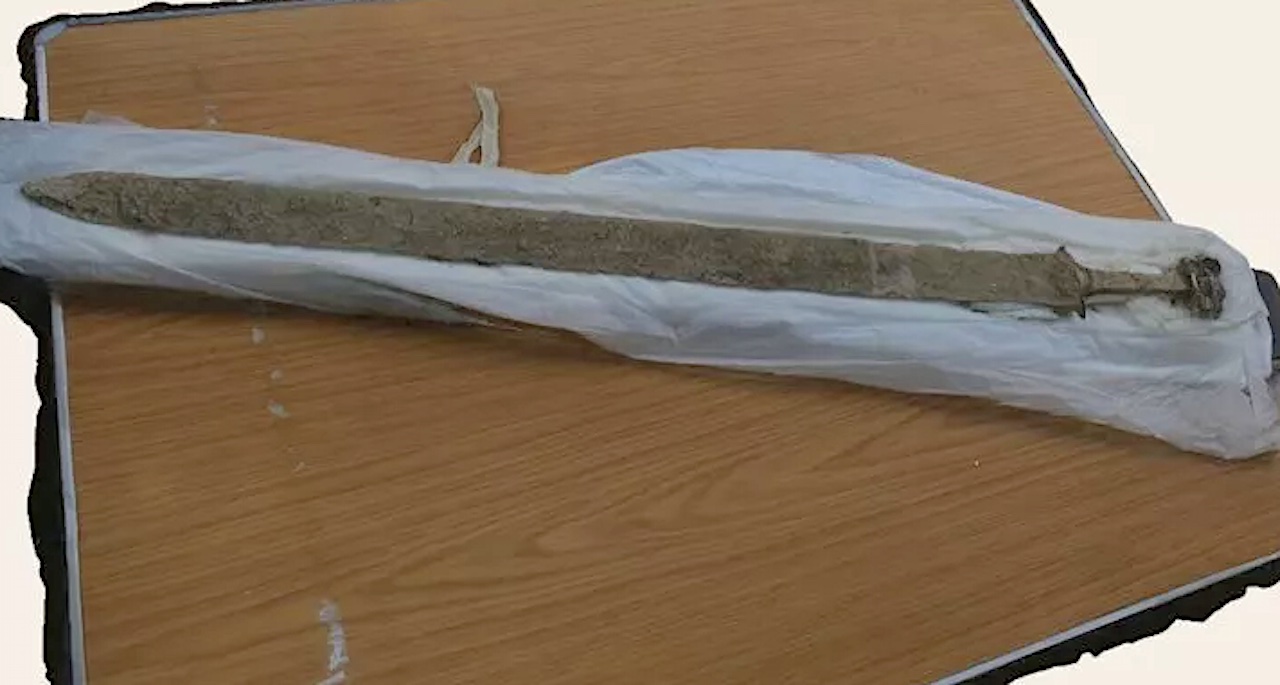
An astonishingly well-preserved sword has been uncovered in England among other grave goods that are helping to reveal critical details about the Anglo-Saxons.
Dating back to the 6th century, it was found in a cemetery for high-social-status individuals that’s being kept secret from the public due to the value, both historical and monetary, of the site.
Inferior forging techniques and damp burial conditions mean that most swords recovered in excavations in Britain are corroded and broken shadows of their former glory. This example by contrast contains gilt and silver inlays along the hilt, or handle, while the surprisingly intact blade is inscribed with runes.
“It’s really incredible, in the top echelons of swords, an elite object in every way, which is wonderful. It rivals the swords from Dover and from Sutton Hoo,” said Duncan Sayer, the lead archaeologist on the excavation and professor of archaeology at the University of Central Lancashire, referring to the burial mound in Suffolk where the famous Anglo-Saxon helmet was discovered.
The sword, discovered in Kent, is the focus of the 12th season of the BBC television program Digging for Britain, whose presenter Professor Alice Roberts, said she’s never seen anything of the sort in the more than a decade of hosting the show.
“It’s an extraordinary Anglo-Saxon cemetery, with really beautifully furnished graves,” she told the Guardian. “We have fairly sparse historical sources when it comes to this period, which used to be called the Dark Ages. We don’t have much in the way of contemporary writing.”
DIGGING FOR BRITAIN:
- Buried 3,000-Year-old Spade is One of the Oldest Wooden Tools Ever Found in UK
- Hoard of 1,000-yo Coins Unearthed in Farmer’s Field Nets Millions for Metal Detecting Friends–and Treasure for UK
- 1,000 year old Viking Sword Fished out of an Oxfordshire River with a Magnet
Dating to the Anglo-Saxon heyday stretching from the receding of the Roman Empire to the scourge of the Vikings, the cemetery is revealing new details about their life. For example, one of the skeletons was found with remnants of fly pupae on his bones, suggesting he may have spent time lying in state, with countrymen and loved ones coming to pay respects.
Genetic analyses of the bones of the cemetery show that most of the DNA contains similarities with northern Europe, hinting at a migration event shortly after the Romans ceded the British Isles to native officials. However, some of the female graves contained artifacts of Frankish origin.
Following proper conservation and the filming of the show, the sword will go on display in the Folkestone Museum in Kent.
SHARE The Story Of This Top Eschelon Sword With Your Friends…




















